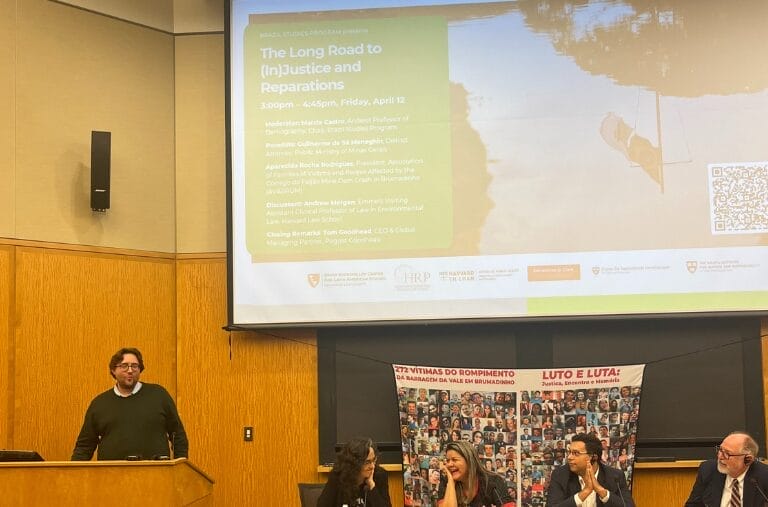The Rana Plaza Disaster is among the worst industrial accidents on record. On 24 April 2013, an eight-story building that housed five garment factories collapsed in Dhaka, Bangladesh, killing at least 1,132 people and causing at least another 2,500 to be severely injured.1
Following reports on the poor working conditions and deficient safety in the building, the collapse sparked outrage and gave rise to the Accord on Fire and Building Safety in Bangladesh (the Bangladesh Accord).
The Accord on Fire and Building Safety in Bangladesh
This legally binding agreement was signed by more than 200 companies representing brands, retailers, and importers from Europe, North America, Asia, and Australia and two union federations (IndustriALL Global Union and UNI Global Union) together with several NGOs that were parties as ‘witnesses’.2
It was designed as a commitment for a “safe and sustainable Bangladeshi Ready-Made Garment (RMG) industry and other related industries in which no worker needs to fear fires, building collapses, or other accidents that could be prevented with reasonable health and safety measures”.3
The first version of the Bangladesh Accord was signed in 2013 and renewed and updated in 2018. The three-year term of the 2018 Accord was due to expire on 31 May 2021.
The RMG Sustainability Council
On 12 May 2021, IndustriALL Global Union and UNI Global Union gave notice to withdraw from the RMG Sustainability Council (RSC) in Bangladesh, effective on 1 June 2021.
The RSC was created by the Accord through negotiations with the Bangladeshi garment industry in order to include factory owners as stakeholders. However, if the Accord is not renewed, the RSC will lack a robust enforcement mechanism to ensure that brands meet their obligations and factories make reparations.4 This situation will likely undo the progress achieved through the Bangladesh Accord.
In this regard, The Clean Clothes Campaign (one of the witness signatories to the Accord) has explained that the Accord was successful because: “it is a binding agreement that has real punishments for brands, retailers, and factories who do not take enough action. Unions take up half of the seats in the Accord’s governance structures and can hold brands accountable”5.
Notably, this would not be the case if the government body intended to replace the Accord where “worker representatives hold only one third, instead of half of the governance seats”.6
On 31 May 2021, IndustriALL Global Union, UNI Global Union, and a negotiating committee representing leading fashion brands announced that they had reached a tentative agreement to extend the 2018 Accord for three months as negotiations continue. However, the announcement states that this interim agreement must still be signed by the individual brands.7
The Accord: main features and benefits
The Bangladesh Accord commits the signatories to implement a plan to improve work conditions and safety in the workplace. The plan is then monitored by a qualified safety inspector, appointed by the Steering Committee, responsible for making “all reasonable efforts to ensure that an initial inspection of each factory covered by [the Accord] shall be carried out within the first three months of it being listed by a signatory company, and that follow up and maintenance inspections are carried out during and after the initial remediation process”.8
Funded by the companies that make contributions proportional to the volume of each company’s garment production in Bangladesh, the Accord states that the signatories are aware of the need for safer workplaces and they can only be achieved with the active participation of those who work in them.
It also recognizes in its preamble that signatories should promote respect for the rights of workers, in line with ILO Conventions, especially when it comes to the right of freedom of association.
One of the most important innovations of the Accord is its dispute resolution mechanism. Article 3 of the Accord establishes a Steering Committee (SC) to provide the first decision on any dispute between the parties arising under the terms of the Accord.
The SC then adopts a revised Dispute Resolution Process (DRP) to specify the timelines and procedures. Its decision making is supported by a member of the Accord secretariat who performed an initial investigation for the parties and presented facts and their recommendations. The DRP also incorporates the opportunity for parties to participate in a mediation process in order to avoid arbitration. Only in the event of an appeal of either party to the SC decision, the dispute would be brought to a ‘final and binding arbitration process’.
The arbitration agreement in the Accord provides that the arbitration shall be governed by the UNCITRAL Model Law (as amended in 2006). However, the SC’s Governance Regulations stipulate the 2010 UNCITRAL Rules. The seat of arbitration would be The Hague and it would be administrated by the Permanent Court of Arbitration (PCA).
Benefits generated by the Accord have been continuously highlighted by workers, unions, and even companies. Notably, the fact that the Accord is a legally binding document allows for the signatories to be held individually accountable. In addition, the Accord requires compliance with inspection and remediation programs. It is also considered to have granted an ‘unprecedented level of collective leverage to its 200 brands’ and provides that unions could bring claims against both brands and retailers that are at fault with the agreement.9
The Bangladesh Accord arbitrations
Two arbitration proceedings originated from the Bangladesh Accord.
The claimants (the unions IndustriALL Global Union and UNI Global Union) relied on the arbitration clause in the Accord which provided for arbitration seated in The Hague with the proceedings administrated by the PCA. The claimants alleged that the respondents (two global fashion brands) had: “failed to require the remediation of certain supplier factories and failed to negotiate commercial terms that made it viable for the supplier factories to remediate their premises”.10
Both arbitration proceedings were settled and resulted in effective settlements to upgrade factory remediation.
These were the first publicly known arbitrations dealing with business and human rights disputes. They prompted discussions as to whether the arbitration mechanism provided in the Bangladesh Accord could be considered as a model for resolving multi-stakeholder human rights disputes offering genuine access to remedy for victims.
In particular, they triggered some careful consideration of issues such as the need for balancing transparency and confidentiality of the proceedings, the interpretation of the parties’ consent to arbitration and the coordination of multi-stakeholder proceedings.
Arguably, the choice of arbitration as the dispute resolution mechanism provided in the Accord demonstrated the feasibility of a proceeding intended to be tailored-made for the parties and their specificities. A proceeding that would allow unions, companies, and workers to have their rights heard in a fast-paced, fair and enforceable proceeding.
More recently, The Hague Rules on Business and Human Rights Arbitration, which were published at the end of 2019, paved the way for arbitral proceedings specifically tailored to the resolution of business and human rights disputes.11
Most of the characteristic features of the Hague Rules anticipate the Rules’ application to arbitrations by which individuals seek redress for alleged human rights violations.
Using arbitration to resolve business and human rights disputes could significantly reduce the impediments that victims of human rights violations often face in litigation proceedings (e.g., jurisdictional issues and access to full redress).
However, careful consideration must be given to issues such as:
- A need for balancing transparency and confidentiality of the arbitration proceedings
- An interpretation of the parties’ consent to arbitration
- The coordination of multi-stakeholder proceedings.
Consideration is needed to avoid an unfair advantage for businesses that have been using arbitration for their commercial disputes for a long time and, therefore, have more knowledge and experience of the arbitration system.
The effectiveness of the Accord in practice and its legacy
Much has been said about what was promised by the Bangladesh Accord and what was expected by its beneficiaries. In practice, however, some important questions need to be answered: Did the Accord deliver tangible results? Can the Accord be considered as a model for large-scale protection of workers and effective dispute resolution of business-related human rights disputes?
According to a 2018 report from the NYU Stern center for Business and Human Rights new safety issues had been identified in 2,024 factories in Bangladesh, whilst 85% of safety issues in factories already under inspection had been fully resolved by relying on the Bangladesh Accord – moreover, up to USD 600 million were spent on factory remediation.12
The figures indicate that the Accord worked in practice and demonstrate that new models for the protection of victims in business-related human rights disputes should be considered. The Bangladesh Accord strikes a balance between the interest of workers, unions and corporations, creating accountability and holding companies accountable through arbitration.13 This type of initiative also highlighted the need for increased awareness of the importance of safe work conditions throughout supply chains – especially in developing countries.
When it comes to whether the Accord can be considered as a model for large-scale protection of workers and effective dispute resolution of business-related human rights disputes it is worth noting that the two arbitration proceedings that relied on the Accord demonstrated that there is room to grow and that binding agreements are a potential mean for holding companies accountable.
Despite having been created with the intention to provide safety for factory workers, this large-scale protection mechanism based on a legally binding agreement could potentially be applied to different areas of human rights, such as disputes related to environmental issues. In this regard, it has been reported that one of the arbitrators involved in the Bangladesh Accord arbitrations acknowledged the importance of the role played by the trade unions and concluded that the kind of collective action represented in the Bangladesh Accord is worth serious consideration for wider application in the context of the collective action required for environmental regulation.14
If the negotiations that will take place during the next 3 months fail to secure the renewal of the Bangladesh Accord, its expiration would be, without a doubt, a missed opportunity for the continuation of a model to resolve business-related human rights disputes that offered access to remedy for victims of human rights violations.
This, however, should not deter businesses and companies from considering this model as a viable option to demonstrate their commitment to the third pillar of the UN Guiding Principles on Business and Human Rights in relation to access to remedy.
Initiatives similar to the Bangladesh Accord could be a modern and effective solution for business-related human rights disputes and, potentially, other disputes that require collective action.
_____









